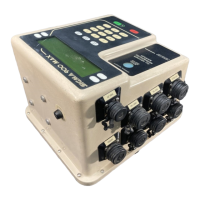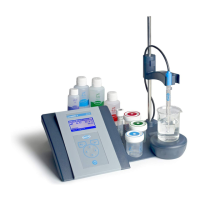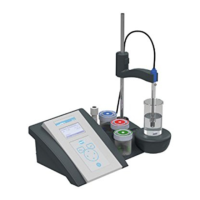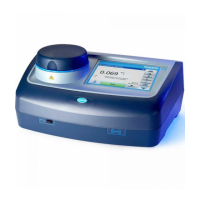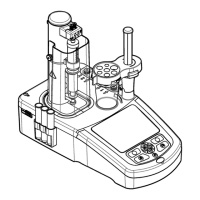Page 42
Creating and Storing Multiple Programs
8837prg.fm
Section 5
5. If the desired indicator is flashing on the display, press the YES key. If the
desired indicator is not flashing, press the
NO key. This will cause the
other indicator to flash.
6. Press the
YES key. The month will begin to flash. Select the correct day,
month and year using the same procedure as you used to set the time.
7. After the correct year has been entered, the display will read
SYNCHRONIZE TIME-ENTER AT TIME. Pressing the YES key will start the
clock. The display will read
CLOCK IS NOW SET.
5.7 Creating and Storing Multiple Programs
The sampler can store up to five programs (each with its own set of
parameters, i.e. number of bottles, bottle volume, intake tube length, etc.).
1. To store or retrieve another program, the sampler must be in a standby
state (
READY TO START, PROGRAM HALTED, or PROGRAM COMPLETED).
2. To access the other programs, press the
NEW PROGRAM key for 5
seconds. This will cause the display to read
PROGRAM 1?.
3. Press the
NO key to go on to PROGRAM 2?, and so forth. Pressing the
YES key to PROGRAM 1?, 2, 3, 4, or 5, permits the selected program to be
run or changed, as desired.
5.8 Data Logging
The sampler records the time and date that each sample was collected, up to
400 samples. It also records the time and date of up to 24 missed samples.
1. To access information, the sampler must be in the
PROGRAM HALTED or
PROGRAM COMPLETE standby state.
2. Press the
TIME/READ key for two seconds. The display will read
SAMPLES TAKEN.
3. To display the time/date for each sample, press the
YES key. To advance
to the next sample time/date, press the
YES key again - and so forth, until
all are given.
4. To exit this routine, press the
NO key. The time and date of any missed
samples are displayed after collected samples.
The sampler memory incorporates the “wrap around” method of data storage.
That is, when the memory becomes full, the oldest stored data (sample
number, time/date) are dropped as new data are received. The data logger
retains the 400 most recent times/dates for the collected samples.

